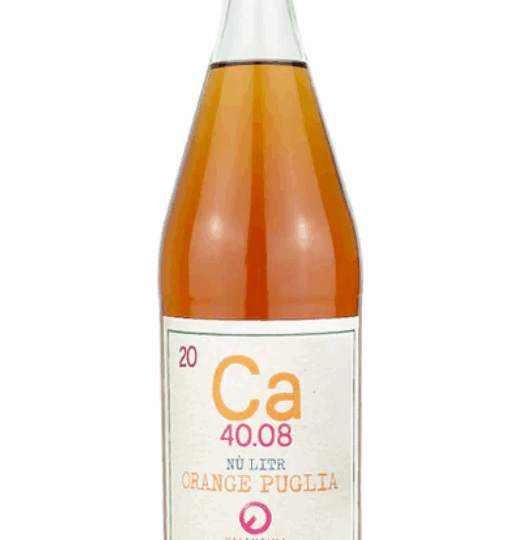Introduction to Orange Wine
Orange wine, often referred to as skin-contact white wine, is a fascinating and increasingly popular category that has been gaining traction among wine enthusiasts and casual drinkers alike. Its unique production methods and flavour profiles set it distinctly apart from traditional white wines, offering a diverse tasting experience that appeals to adventurous palates.
Originating from ancient winemaking practices in regions such as Georgia, orange wine is crafted by fermenting white grape varieties with their skins, much like red wines. This process not only imparts a vibrant hue that ranges from amber to deep orange but also infuses the wine with complex flavours and tannins.
The Production Process of Orange Wine
The production of orange wine is a time-honoured technique that has evolved but still reflects its roots. Here are the key steps involved in crafting this distinctive beverage:
1. Grape Selection: Typically, grape varieties used include Pinot Grigio, Sauvignon Blanc, and Chardonnay. The choice of grape significantly influences the final flavour profile.
2. Skin Contact Fermentation: Unlike traditional white wines where skins are removed immediately after pressing, orange wines are fermented with their skins for an extended period, sometimes lasting weeks or even months. This contact is crucial for extracting tannins, colour, and aromatic compounds.
3. Natural Fermentation: Many producers opt for wild yeast fermentation, allowing the natural flora present on the grapes to drive the fermentation process. This contributes unique characteristics to the wine.
4. Minimal Intervention: Many orange wines are produced using minimal intervention techniques, eschewing additives and preservatives, which allows for a more authentic expression of the terroir.
5. Aging: After fermentation, the wine may be aged in various vessels like stainless steel tanks or old oak barrels, further developing its complexity.
Understanding the Unique Flavours of Orange Wine
One of the most alluring aspects of orange wine is its broad spectrum of flavours and aromas. The skin contact during fermentation introduces a range of characteristics:
– Fruit Notes: Expect flavours that can include apricot, peach, orange zest, and even tropical fruits.
– Herbal Undertones: Many orange wines exhibit herbal qualities such as chamomile or thyme.
– Earthy Elements: Depending on the region and terroir, you may also find earthy notes like minerality or even slight nuttiness.
– Tannins and Texture: The presence of tannins gives orange wine a mouthfeel more akin to red wine, adding complexity and richness.
Each producer’s approach and the grape varieties used will influence these characteristics, making every bottle a unique experience.
Pairing Orange Wine with Food
Pairing food with orange wine can be an exciting culinary adventure due to its versatility and complexity. Here are some pairing suggestions:
– Cheese: Try pairing with aged cheeses like Gruyère or even blue cheese for a delightful contrast.
– Meats: Grilled meats such as chicken or pork work well; consider marinating them with herbs to enhance the pairing.
– Seafood: Dishes featuring oily fish like salmon or mackerel complement orange wine beautifully.
– Vegetarian Dishes: Roasted vegetables and hearty salads can elevate the experience when paired with an amber-hued gem.
When pairing food with orange wine, consider dishes that possess robust flavours to match its intensity while also exploring contrasting elements for an exciting palate experience.
The Versatility of Orange Wine in Different Cuisines
Orange wine is not just for traditional European fare; its versatility allows it to shine across various cuisines:
– Mediterranean Cuisine: The vibrant acidity and fruitiness complement dishes rich in olive oil, fresh herbs, and grilled vegetables.
– Asian Cuisine: Its unique flavour profile pairs well with spiced dishes such as Thai curries or Szechuan stir-fries.
– Middle Eastern Fare: Dishes featuring pomegranate or tahini create an intriguing interplay with the wine’s earthy notes.
By experimenting with different cuisines, you can discover unexpected pairings that enhance both your meals and your enjoyment of orange wine.
Serving and Storing Orange Wine
To fully appreciate orange wine’s complexity, proper serving and storage techniques are essential:
1. Serving Temperature: Chill orange wines slightly—ideally between 50°F and 55°F (10°C – 13°C)—to bring out their refreshing qualities without dulling their flavours.
2. Glassware: Use larger bowls similar to red wine glasses as they allow for better aeration and aroma concentration.
3. Aeration: Consider decanting younger bottles an hour before serving to enhance their aromatic profile.
4. Storage Conditions: Store orange wines in a dark place at stable temperatures (around 55°F/13°C) with moderate humidity levels for optimal preservation.
Exploring Notable Regions for Orange Wine
While many regions produce exceptional orange wines today, several stand out for their historical significance or innovative approaches:
– Georgia: Often regarded as the birthplace of orange wine, Georgian winemakers have been making skin-contact wines for thousands of years using traditional qvevri (clay vessels).
– Italy: Regions like Friuli-Venezia Giulia and Tuscany are known for their high-quality orange wines made from local varietals.
– Slovenia: This region’s winemakers adopt similar techniques as their Georgian counterparts while showcasing indigenous grape varieties.
– Australia: Emerging producers in Australia experiment with skin contact techniques, offering a modern twist on this ancient practice.
These regions offer not only exceptional wines but also rich cultural stories that enhance your tasting experience.
The Future of Orange Wine
As consumer preferences shift towards natural and organic products, the future of orange wine looks bright. With growing interest from both sommeliers and casual drinkers alike:
– Expect more winemakers to experiment with skin contact processes across various grape types.
– Increased availability in restaurants and retail outlets will help demystify this category for new consumers.
– Educational events focused on tasting experiences will likely become more common as enthusiasts seek to explore this vibrant world further.
The evolution of orange wine reflects broader trends within the wine industry towards authenticity and craftsmanship.
Engaging with the Orange Wine Community
Engaging with fellow enthusiasts can enrich your understanding and appreciation of orange wine:
– Attend tastings or festivals dedicated to natural wines where orange varieties are prominently featured.
– Join online forums or social media groups focused on natural wines; these platforms often provide insights from both consumers and producers.
– Explore local wineries that produce orange wines—many offer tours where you can learn directly from winemakers about their processes.
By immersing yourself in this community, you’ll gain valuable knowledge while discovering new favourites along the way.
Orange wine invites exploration beyond conventional boundaries—its production techniques reflect history while its flavours offer a sensory adventure waiting to be discovered by curious palates everywhere. Embrace it not just as another option on a menu but as a celebration of innovation in winemaking craft!







